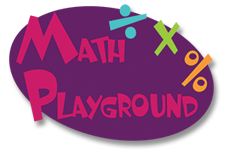Note: This year I am blogging weekly reflections at my school site (weskids.com) in order to provide more transparency in my teaching for parents, students, and the community (local and global). I will be cross-posting most of the entries here at Bit By Bit as well. You can see the original posts at the “Reflections by Mr. S” blog.
______________________________________________
1st Grade and Multi 1/2 students have been working the past couple of weeks at a site called, “Into the Book” (at http://reading.ecb.org/). There are eight different reading strategies for students to explore at the site, but we’ve been focusing on the strategy of “Visualizing,” or, “making pictures/movies in your mind when you read. This is an essential strategy for reading comprehension. For some, this strategy comes naturally; for others, it is something they need to practice often. “Into the Book” helps students strengthen this skill by reading text and then creating images and picking music that illustrates what “movies” they have in their mind while reading.
We start the lesson by first taking a “mind walk” where I have students listen to me as I describe our imaginary walk through the school. I have them stop and center on an image, such as, “Oh look: there’s Ms. Westerberg in the library!” and then add to the description so they can focus on how the images in their minds change. For instance, “Wow, look at Ms. Westerberg dance on top of the desk in that pink tutu.” When students start giggling, you know the images in their minds have just changed!
Next, we head to the “Into the Book” site and watch an introductory video about visualizing. As a class, we work together on coming up with images and music for a nonfiction piece, and then students go off and independently work on a poem, called “Cat Act.”
Students also learn the skill of how to create a username that they need to write down so they can log back into the site later in order to finish their work.
Things you and your students can do at home:
- Ask your students about our “mind walk.” Try it with them! You tell a story that takes them on a “visual” walk, and then ask them to tell you one!
- When reading with your children, model how you “see images” in your mind and discuss how those images change. Ask them what images they see in their mind. Compare images of a certain character in a book. Sketch out your character and compare drawings.



































